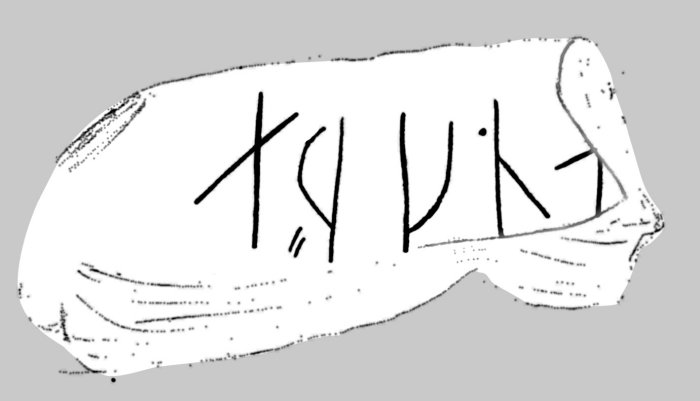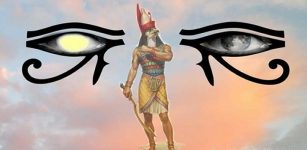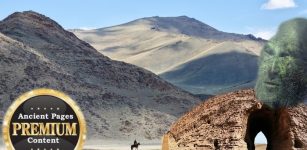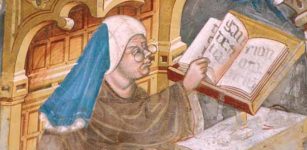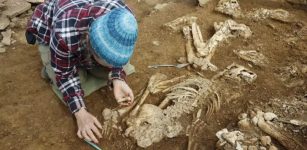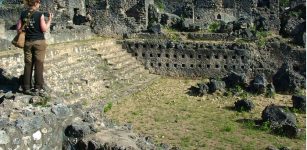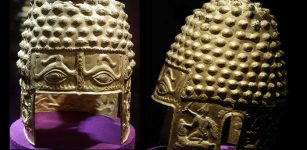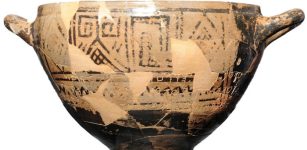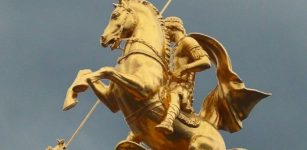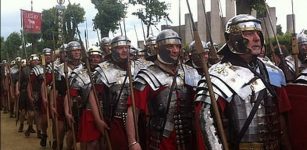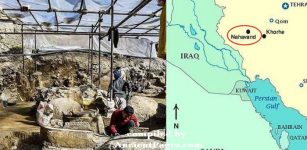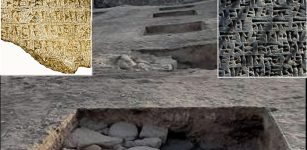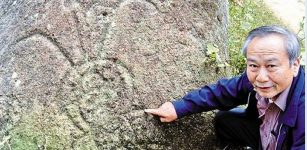Puzzling Runic Inscription Dated To 1050-1500 AD Unearthed In Oslo, Norway
AncientPages.com - A very rare whetstone - a tiny piece of polished slate from the medieval deposits, dating c 1050-1500 - has been unearthed by archaeologist from the Norwegian Institute for Cultural Heritage Research (NIKU).
The artifact is very small but its discovery raised many puzzling questions regarding how Medieval residents of Oslo used written language - in this case, runes.
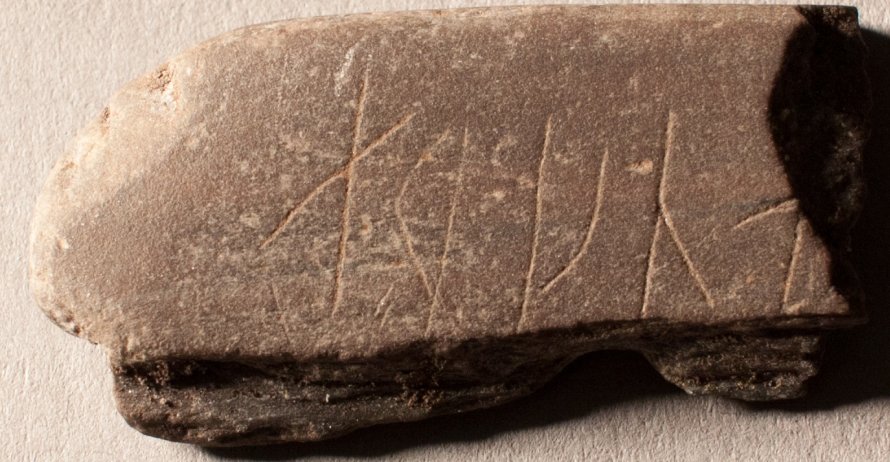
Whetstone with runes. The top has five distinct runes, where the last one is broken, and rune 2 is slightly weaker than the others.Foto: Karen Langsholt Holmqvist, NIKU.
Can this unusual artifact be related to medieval person who was most likely still learning how to write?
Kristine Ødeby, archaeologist and field supervisor on the excavations in the old town, said that finding runic inscriptions on an archaeological excavation and especially to find whetstones with runes - is rare.
Only one dated to the Viking Age and Middle Ages was previously discovered in Bergen on Norway's west coast.
See also:
Runes: Facts And History About Odin’s Secret Language
Roskilde 6 – Longest Viking Ship Ever Discovered Was 37-Meters Long And Carried 100 Viking Warriors
Researchers say that some of the runes are difficult to identify, but it seems that the runes æ, r, k, n, a appear on the whetstone. But it is not easy to tell what they mean.
NIKU's rune experts have come up with several possible interpretations, ranging from a person's name to word to words like "scared" ugly "and" pain ".
- This is probably an unsuccessful attempt to write a name or another rather trivial inscription, but we can see that this is hardly a trained rune carver, says Karen Holmqvist, a Ph.D. fellow at NIKU and a specialist in runes.

The underside. The smooth, slightly uneven surface on the underside can indicate that the item has been used as a whetstone. Closer to the fracture, the object becomes thinner. This has probably been the middle of the stone. Photo: Karen Langsholt Holmqvist, NIKU.
Is it simply an example of bad runic language?
The findings contribute to the perception that the art of runic writing was relatively widespread in medieval Norway. But many writers would probably find themselves in a borderland, where they knew about writing, but were not literate.
It is perhaps not that strange that we find some strange spellings and some mirrored runes. Just think how you yourself wrote when you were learning to write, says Holmqvist.
The medieval person behind this whetstone inscription probably belonged to this group. They knew about the runes, but probably mixed them up a bit.
AncientPages.com
Expand for referencesReferences:

